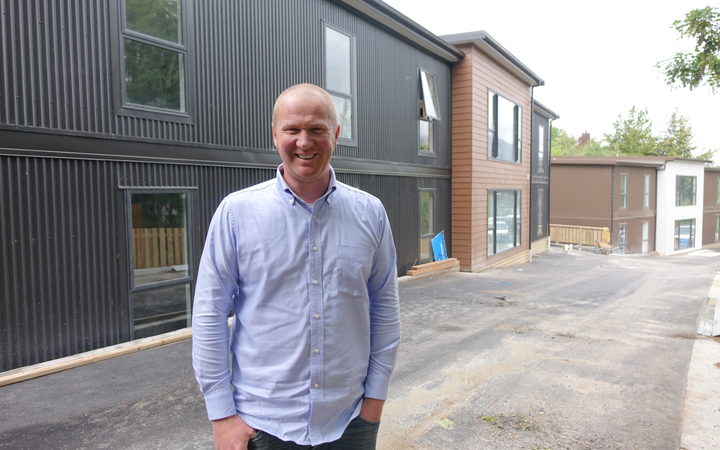
Authorities in the Queenstown Lakes and Central Otago districts are all too aware of the difficulties of getting private investment to address the plight facing workers.
READ MORE:
But a model which may hold potential is already on display in Queenstown.
Bus driver and property developer Simon Haslett has built a four-unit, 32-room residence in Goldfield Heights on the site of a former stand-alone home.
"I don't really think of myself as a property developer," he said.
"We had the property a long time ago. We lived in it and had a couple of girls and outgrew it and moved and lived somewhere else.
"We were actually thinking of selling it, when a guy came along and said 'I want to rent it'.
"I said it's not for rent, it's for sale, but I had a good feeling about him so I let him move in. And then he moved a lot of people into it and I felt it was a lot of people for the property, so I said let's see if we can built something a bit bigger and a bit better. So that's how it was birthed."
Three long and difficult years down the track and last week the first tenants have finally moved into the property.
The residence has attracted interest from hotels and other employers in the town, but Mr Haslett has let it to charity workers.
"The people that are moving in here are moving out of six or seven other houses to move in here so there'll be six or seven houses on the rental market that haven't been.
"I set out to do good and I think I've done good," he said.
The property would provide a return, though rooms would cost much less than the average in the town and more altruism was needed to solve the area's affordability crisis, he said.
"I was catering towards someone's needs. I drive the school bus, I'm just over minimum wage. I'm not a millionaire property developer like your typical property developer," he said.
"I was just catering to someone's needs really. There's lots of people doing Airbnb's and holiday houses - which we've done in the past - but I didn't feel that was going to help Queenstown very much and I felt this was a much better product to meet the most pressing demand which is staff and workers."
The development was far more difficult than expected and had cost "millions - and millions more than it was supposed to as well".
"It's a huge challenge and I can see why not many people have actually done it," Mr Haslett said.
"This wasn't in anyway easy, when I set out I didn't think it was going to be this big - or this difficult or challenging.
"These houses were built off-site and then brought in. The idea is that you do your groundwork while they build the homes, so that overall the project is more affordable. It didn't pan out that way because we had challenges with council, and retaining walls, and engineers and all that kind of stuff. But that was the plan.
"To do workers or staff accommodation you need to find a way to build more affordably."
The model had its own challenges when it came to financing as banks were nervous about an asset not being constructed on site.
The country needed to take a look at how it was housing its lowest income workers and what models and incentives could be used to entice private money to invest, Mr Haslett said.
"If we want to build more houses we've got to build them smarter," he said.
"We can't keep building them the way we have been building them because that's not working. So whether it's prefabricated or built off-site, if we want to build more houses we've got to get more smart."
Comments
"It is not from the benevolence of the butcher, the brewer, or the baker that we expect our dinner, but from their regard to their own interest." (Adam Smith)
There's more chance of me enjoying The Da Vinci Code than there is of 'altruism' solving anything.












